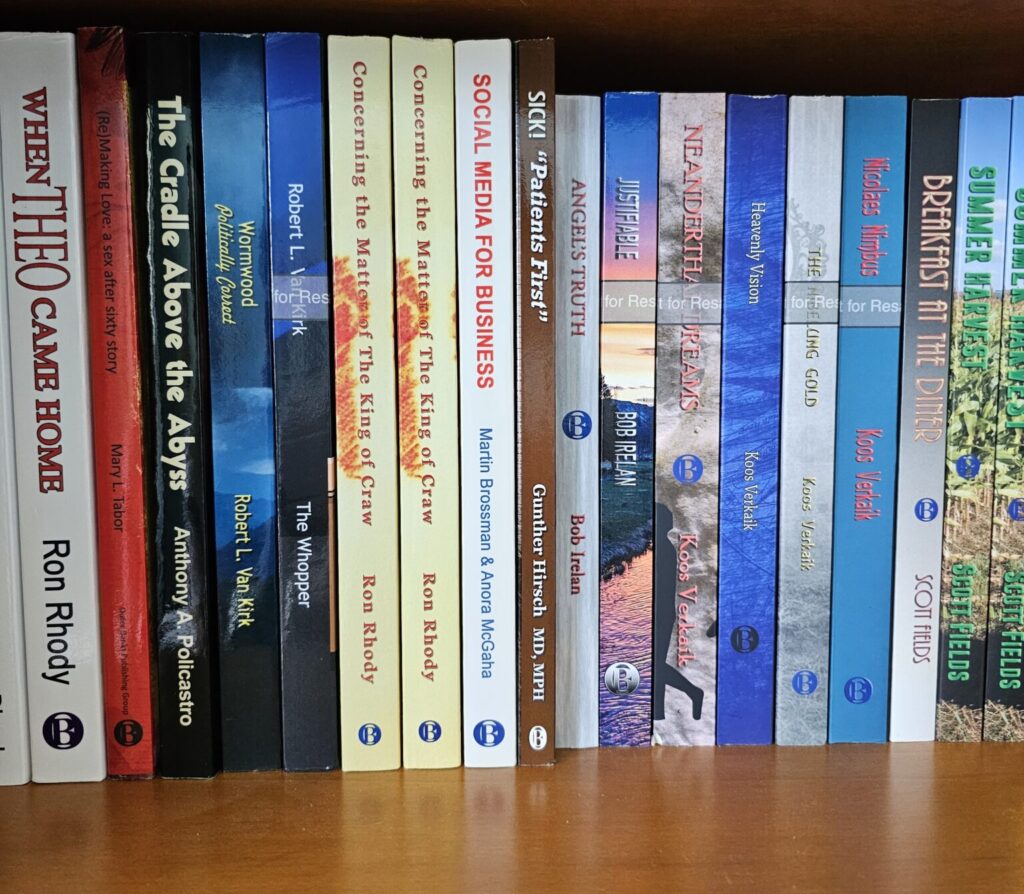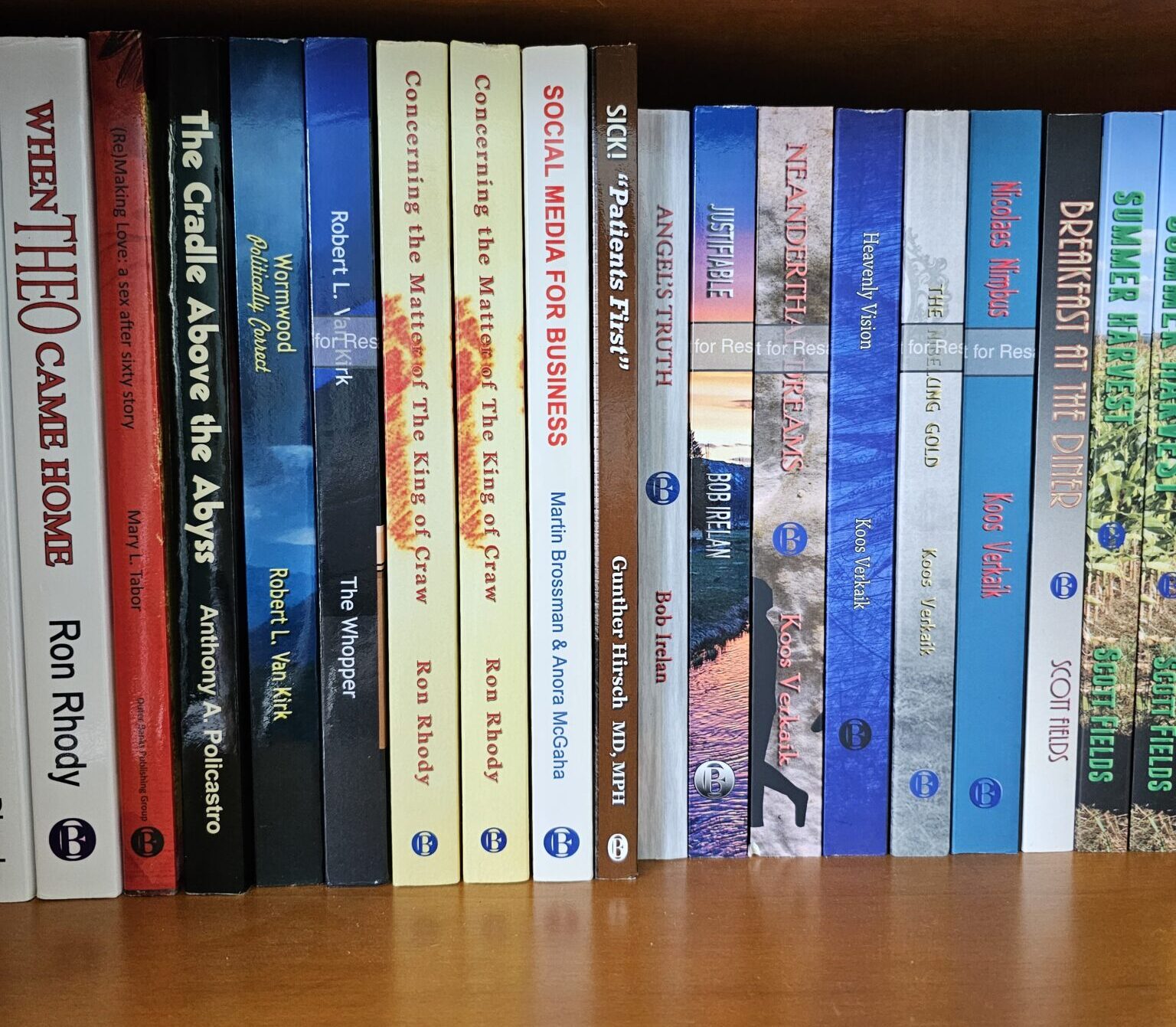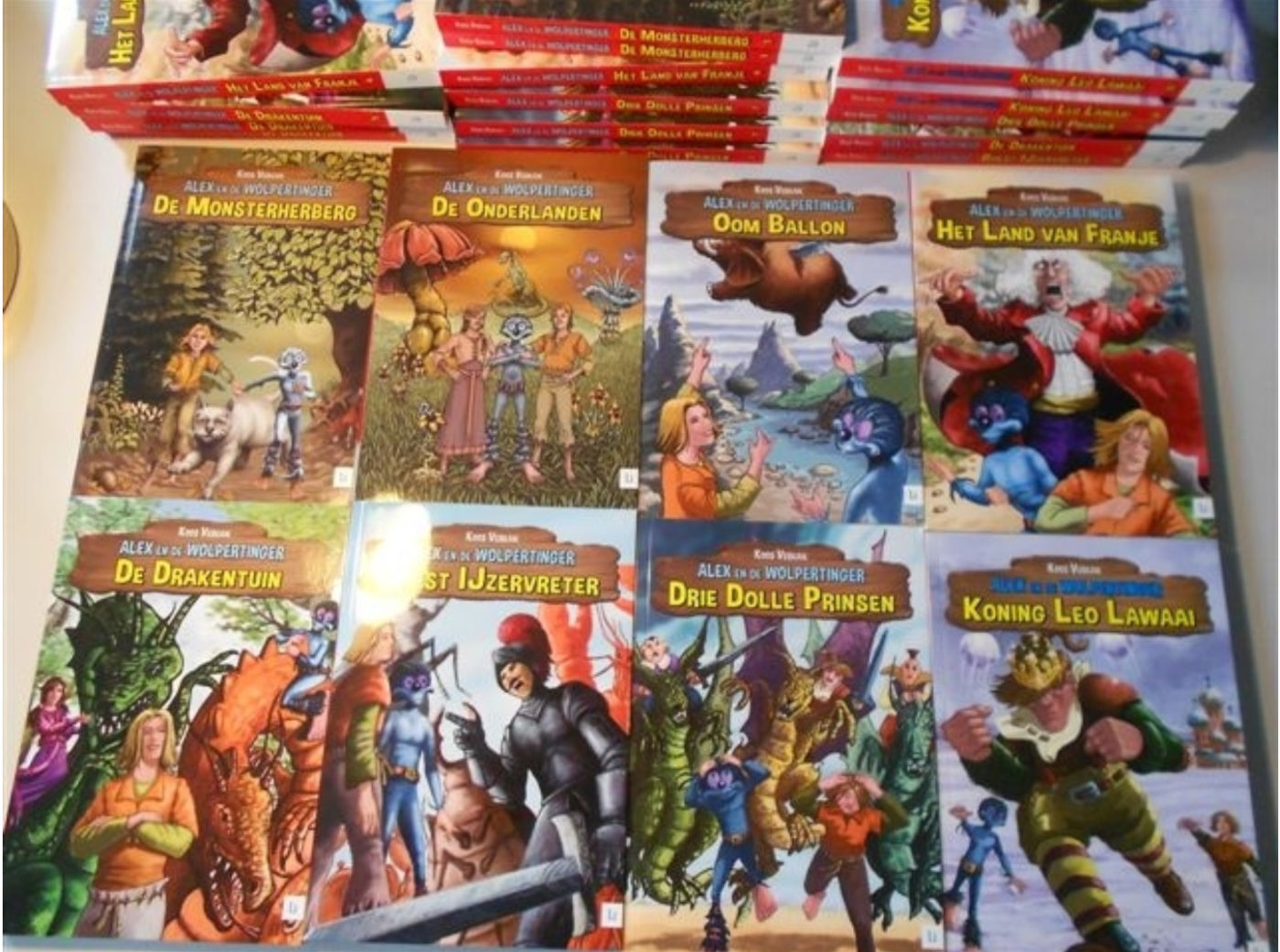


Book publishing trends are constantly evolving as technology, consumer preferences, and market forces influence the industry. Based on the web search results from Bing, some of the latest book publishing trends for 2024 are:

Source: Conversation with Bing, 1/11/2024
(1) The Top 10 Publishing Trends for 2024 – Written Word Media.
(2) Book Trends 2024: The 5 Top Genres, Trends, and Changes – BOOK RIOT.
(3) The New Era Of Brand Building: Why Published Books Are The Tool Of ….
(4) Book Trends to Look for in Publishing in 2024 | Blurb Blog.

 In an age of rapidly advancing technology and changing reader preferences, the world of book publishing is undergoing a profound transformation. Traditional practices are giving way to innovative approaches, and new trends are reshaping the way authors create, publishers distribute, and readers consume content. This article delves into the most current trends in book publishing, offering insights into the dynamic landscape that is shaping the future of the industry.
In an age of rapidly advancing technology and changing reader preferences, the world of book publishing is undergoing a profound transformation. Traditional practices are giving way to innovative approaches, and new trends are reshaping the way authors create, publishers distribute, and readers consume content. This article delves into the most current trends in book publishing, offering insights into the dynamic landscape that is shaping the future of the industry.
The digital revolution has indelibly impacted the publishing industry, with e-books reigning supreme in the modern era. E-books have not only opened up new avenues for authors to self-publish but have also provided established publishing houses with a cost-effective way to reach wider audiences. This trend has been accelerated by the proliferation of e-readers, tablets, and smartphones, allowing readers to access their favorite books on-the-go. As a result, publishers are increasingly focusing on optimizing content for digital platforms, ensuring that formatting and design translate seamlessly across various devices.
The rise of self-publishing has disrupted the traditional publishing model, granting authors greater autonomy and control over their work. Authors are now able to sidestep the often rigorous gatekeeping processes of traditional publishers, and instead, publish their books independently through online platforms. This trend has led to a surge in the number of books being published, spanning various genres and catering to niche audiences. While self-publishing offers authors unprecedented creative freedom, it also necessitates a more entrepreneurial approach, as authors are responsible for marketing, distribution, and overall book visibility.
The publishing industry is making concerted efforts to champion diversity and inclusion in both the stories being told and the voices telling them. Readers are increasingly seeking stories that reflect a range of experiences, cultures, and backgrounds. Publishers are responding by actively seeking out underrepresented authors and narratives, thereby enriching the literary landscape. Sensitivity readers and increased awareness of cultural authenticity are becoming standard practices, ensuring that stories are respectful and accurate in their portrayals.
Environmental concerns have permeated every industry, and publishing is no exception. Publishers are adopting eco-friendly practices, from using recycled materials for physical books to reducing carbon footprints in the production and distribution processes. Additionally, the concept of “slow books,” akin to the slow food movement, is gaining ground. This entails focusing on producing high-quality, lasting content, as opposed to rushing to meet market demands with disposable literature.
Book discovery in a sea of digital content has become a major challenge. As a result, creative marketing strategies are essential for capturing readers’ attention. Social media, book influencers, and online book clubs play a pivotal role in generating buzz around new releases. Data analytics and AI-driven insights are also being utilized to target potential readers more effectively and tailor marketing campaigns to their preferences.
In an era of diminishing attention spans, the popularity of serialized content and shorter-form literature is on the rise. Platforms like Wattpad and Radish have gained traction by offering stories in bite-sized installments that cater to readers looking for quick entertainment. This trend is prompting authors and publishers to explore new ways of storytelling, experimenting with episodic narratives and concise yet impactful prose.
Audiobooks are experiencing a renaissance, with their popularity surging among busy readers who can now consume books while commuting, exercising, or multitasking. The convenience of audiobooks has led to a significant increase in their production, with publishers investing in high-quality narrators and immersive soundscapes. Additionally, podcasts centered around books and literary discussions are further engaging the literary community and enhancing the audio experience.
Publishing models are becoming increasingly hybrid, blending traditional publishing with self-publishing elements. Some authors choose to self-publish certain works while pursuing traditional publishing routes for others. This approach allows authors to leverage the advantages of both worlds, maintaining creative control over some projects while benefiting from the resources and distribution networks of established publishers for others.
Artificial Intelligence is making its presence felt in the writing process. AI-driven tools assist authors in various stages of writing, from generating plot ideas to offering grammatical suggestions. While these tools are not meant to replace human creativity, they do offer valuable support to authors, helping them streamline their work and enhance its quality.
Blockchain technology is gradually seeping into the publishing industry, primarily in the realm of copyright management and royalty tracking. Blockchain’s decentralized and immutable nature provides a secure and transparent way to manage intellectual property rights and ensure that authors receive fair compensation for their work, even as it gets shared, adapted, and sold across different platforms.
In conclusion, the world of book publishing is in a state of flux, with innovative trends reshaping every aspect of the industry. From the dominance of digital content and the empowerment of self-publishing to the emphasis on diversity, sustainability, and serialized narratives, the landscape is evolving to cater to modern readers’ preferences and behaviors. As authors, publishers, and readers continue to adapt, the future promises a literary world that embraces technology while staying true to the timeless art of storytelling.
The author generated this text in part with GPT-3, OpenAI’s large-scale language-generation model. Upon generating draft language, the author reviewed, edited, and revised the language to their own liking and takes ultimate responsibility for the content of this publication.

Outer Banks Publishing Group recently signed a four-book contract with Scifi and children’s book author Koos Verkaik of The Netherlands.

Author Koos Verkaik
Koos’ Saladin, the Wonder Horse, a four book series, is about a poor Saxon girl, who is given a special horse, Saladin, by a mysterious knight during the turbulent times in 12th century England during the reign of Richard the Lionheart and Robin Hood.
The series will be published in early 2018.
Koos says he developed his own writing voice and that is what makes his books different, according to an interview with Circle of Books.
“My books are different from other writers, they are all typical ‘Koos Verkaik Books’. I love it to make the reader wonder what it is all about and where it will lead to. But I never liked books that end without the reader knowing what it was all about. Therefore I always come up with explanations. Why one should buy them? Buy one of my books and I take you by the hand, lead your through the most insane situations, you will have a great time and after having read the last word, you will say: “Yes, that was worthwhile!” Up to the next Koos Verkaik Book!”
Koos, a ‘Dutchy’ with spunk and an inexhaustible drive and fathomless imagination, is one of the most prolific authors of Scifi and children’s books in The Netherlands. His novels, All-Father and Wolf Tears, earned him the moniker, the Dutch Stephen King.
He wrote his first Scifi novel, Adolar, in a weekend when he was 18 years old and the manuscript was published shortly thereafter.
Koos has published over 60 books, both children’s books and novels, many hundreds of comic scripts, and he has worked as a copywriter. He is currently working on several screenplays and new novels.
To read more about Koos and his work visit his website at www.koosverkaik.com or follow him on Facebook.
His most recent interview can be read on authorsinterviews.
Read with Pride.
#MarriageEquality , #SCOTUS, #takepride, #LoveWins, #LoveHasNoLabels, #PrideMonth2015, #LoveWins, #LoveIsLove, #DecisionDay, #Pride, @OBXpublishing
A new study by Publishing Technology finds U.S. millennials—defined as people currently between the ages of 18 and 34—almost twice as likely to read a print book as an ebook.
That finding squares with similar print preferences Pew researchers found among older readers as well. Among adults 18 and up, 28% read an ebook in 2014 as compared with the 69% of those who read at least one print book.
Results from the Publishing Technology survey also suggests young readers are equally comfortable with digital and analog modes of book discovery. 45% of millennials report learning about new titles by word-of-mouth recommendations, 32% by online browsing and 25% by browsing through a physical store or library.
via New Survey Finds Millennial Readers Clinging to Print | Digital Book World.

The author H.M. Ward says she left Amazon’s Kindle Unlimited program after two months when her income dropped 75 percent. Credit Joshua Bright for The New York Times.
Authors are upset with Amazon. Again.
For much of the last year, mainstream novelists were furious that Amazon was discouraging the sale of some titles in its confrontation with the publisher Hachette over e-books.
Now self-published writers, who owe much of their audience to the retailer’s publishing platform, are unhappy.
One problem is too much competition. But a new complaint is about Kindle Unlimited, a new Amazon subscription service that offers access to 700,000 books — both self-published and traditionally published — for $9.99 a month.
Read the rest of the story>.

It’s nice to say you are a green company, but doing it effectively is another story.
With digital printing we don’t have thousands of books sitting in warehouses waiting to be sold – spent resources that may or may not be purchased and read.
We print books only when an order is received.
The majority of our book sales (85%) are electronic as manufacturers of ereaders have opened their walled gardens allowing their books to be read on any device, any platform, anywhere, anytime.
Think printed books will go away? No way. Did movie theaters close when home theater systems became mainstream?
The Association of American Publishers reported that the annual growth rate for eBook sales fell during 2012, to about 34% – a sharp decline from the triple-digit growth of the preceding four years.
But that doesn’t mean ebooks are going away. A recent Pew Research Center survey showed that adults who have read an e-book increased from 16% to 23% in the past year. It also revealed that 89% of regular book readers said that they had read at least one printed book in the last year.
Ebooks are merely another channel, another technology to promote, sell and enjoy books. It compliments printed books. Printed books won’t go away – there will just be fewer printed.
Fewer printed books is not good for the big six publishers, but it won’t bankrupt them – just lower their sales volume and profit margins.
That’s why they won’t fully embrace ebooks and why they charge artificially high prices for their ebooks close to the full price of their printed books.
They want to revive the same high profit margins they enjoyed with print books for so many decades.
But they will never convince their customers or the general public that ebooks cost as much as print books to edit, process and distribute.
Ebooks are a disruptive technology and like all disruptive technologies is condemned, rejected and deemed catastrophic for society by those who stand to lose.
The market will determine the accepted price of ebooks, not the publishers and there is nothing they can do to stop it. The tsunami has already hit land.
By Laura Miller for Salon
Closing arguments for the Department of Justice’s antitrust suit against Apple concluded last week, although U.S. District Judge Denise Cote is not expected to reach a decision for another couple of months. If you’ve found the case difficult to follow, you’re not alone. Still it’s worth getting a handle on the basics because the suit — or, more precisely, the business deals behind it — have changed book publishing in significant ways. Furthermore, Judge Cote’s decision could have impact well beyond the book industry.
Read the rest of the story here – Everything you need to know about the great e-book price war
Congrats to Amanda Hocking for using a traditional publisher to further her writing career. She did the right thing seeking out a traditional publisher and the reason is clear – she wants to be a writer – not a book marketer, editor, designer and distributor.
 This is not a new trend – it has been happening for years.
This is not a new trend – it has been happening for years.
The caveat here is her content. She has the content that sells – when she writes, it sells. She can afford to give away a large piece of her royalties so she can spend more time writing.
So should every self-published author seek out traditional publishers for their work. Maybe, yes and maybe, no. Some authors like JA Konrath took the reverse course – he went from traditional publishers to self-publishing because he could get a bigger piece of the publishing pie, especially on his traditionally-published books that went out of print. Even luminary Stephen King experimented with self-publishing a few years back.
A new trend is emerging as traditional publishers go digital. Currently, a self-published author could get their work in front of more people as an eBook than a printed book. This is still true, but as more and more traditional publishers go digital, they can offer both – significant eBook exposure as well as print book distribution. They will take a larger piece of the pie, but if your work is selling well, it is worth going with a traditional publisher.
Here’s the Amanda Hocking story from The New York Times.
If any writer proved that modern self-publishing could be a pretty sweet deal, it was Amanda Hocking.
Amanda Hocking, who has self-published nine books.
In the past year Ms. Hocking, a 26-year-old from Minnesota, became an indie heroine in the literary world for publishing nine books that sold a total of more than one million copies, nearly all of them in e-book form, earning almost $2 million for her efforts.
But for Ms. Hocking, self-publishing has had its limits. On Thursday she announced that she had sold a four-book series to St. Martin’s Press, ending a frenzied weeklong auction that involved nearly every major publisher in the business, including Random House, Simon & Schuster and HarperCollins.
St. Martin’s, part of Macmillan, paid more than $2 million for the world English rights to the “Watersong” series, Ms. Hocking’s latest books in the young-adult paranormal genre. >more
As more and more authors turn to self-publishing, a new trend is emerging that may benefit publishers as well as authors.

Successful crime novelist Joe Konrath is probably the author who started this new trend and is the poster child of successful authors moving into the self-publishing realm.
According to an article in The Star-Telegram online written by Alex Pham of The Los Angeles Times,
“Joe Konrath can’t wait for his books to go out of print.
When that happens, the 40-year-old crime novelist plans to reclaim the copyrights from his publisher, Hyperion Books, and self-publish them on Amazon.com, Apple’s iBooks and other online outlets. That way he’ll be able to collect 70 percent of the sale price, compared with the 6 to 18 percent he receives from Hyperion.
As for future novels, Konrath plans to self-publish all of them in digital form without having to leave his house in Schaumburg, Ill.
‘I doubt I’ll ever have another traditional print deal,’ said the author of Whiskey Sour, Bloody Mary and other titles. ‘I can earn more money on my own.'”
Mr. Pham goes on to write, “It’s difficult to gauge just how many authors are dumping their publishing houses to self-publish online, though for now, the overall share remains small. But hardly a month goes by without a well-known writer taking the leap or declaring an intention to do so.”
However, Mr. Konrath is one of the exceptions to successful self-publishing because his fan base was primarily created by the marketing and distribution efforts of traditional publishing houses.
Does that mean an author needs to be published by a traditional publishing house to be successful later in self-publishing?
Not at all.

Mr. Konrath just stood up on his surf board and is about to catch one of the largest new waves in publishing. He knows where his readers are and how to read them – online where most hang out.
As an aspiring or first-book author who is relatively unknown, you need to market your work to where people seek, read, recommend and review books – in social media: Facebook, Twitter, NING, Linkedin, Foursquare, Goodreads, and all the other social networking sites out there.
There is only one problem. By the time you learn how to effectively market your work on all the social media, you may be in an old-age home especially if you are not so computer savvy. Besides, when would you have time to write another book?
Most authors just want to write. They don’t want to wear six or seven hats and be the marketing guru, the sales superstar or the promotional genius.
This is where publishers can get their own surf board and ride the same wave as Mr. Konrath. But some are just standing up on their boards, others are knelling and most don’t even see the social media wave.
Publishers can offer social networking services, electronic distribution and all the perks of traditional publishing to authors in digital and electronic form. This is a wave that is coming whether publishers like it or not so the best strategy is to make sure to have a surf board and to look out over the horizon. This publisher is certainly standing on his surf board poised to ride the next giant wave.